February 24, 2018 - National Air & Space Museum
|
It was a horrible weather day for flying this Saturday. But my son-in-law Don asked me if I wanted to join him and the boys for a trip to the National Air and Space Museum on the Capital mall. We took the
metro in and soon there we were. |
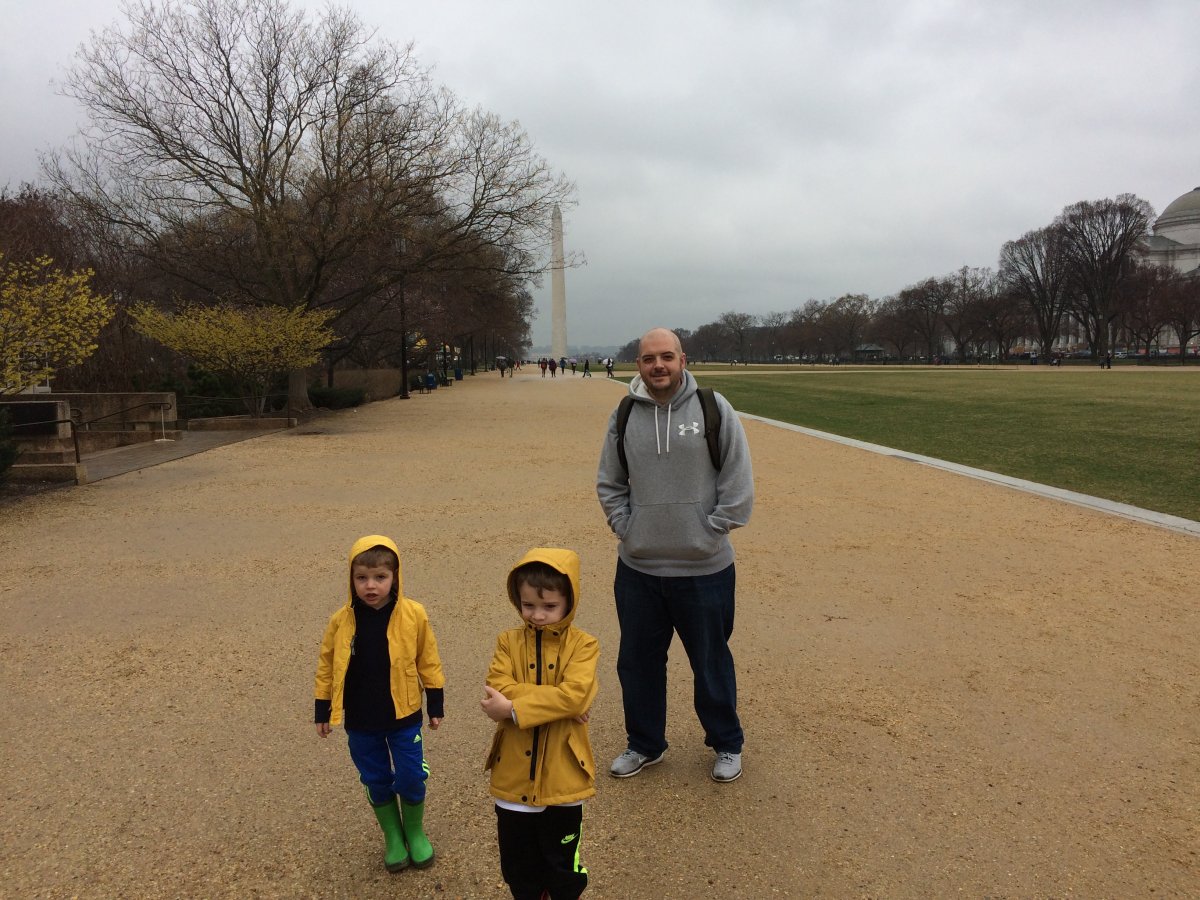 |
|
|
|
By coincidence, I had been thinking I should visit the NASM because I have been reading a lot of books about the American manned space program lately. I think it was the recent Elon Musk SpaceX
rocket putting a Tesla car into a Mars orbit that prompted it. Then Apollo 13 was on TV and the next thing I was reading all these books. You know, the further we get from the 60s of Mercury,
Gemini and Apollo, the more amazing what they did is.
So here is Mercury Friendship 7 in which John Glenn was the first American to orbit the earth. Look how small it is!
|
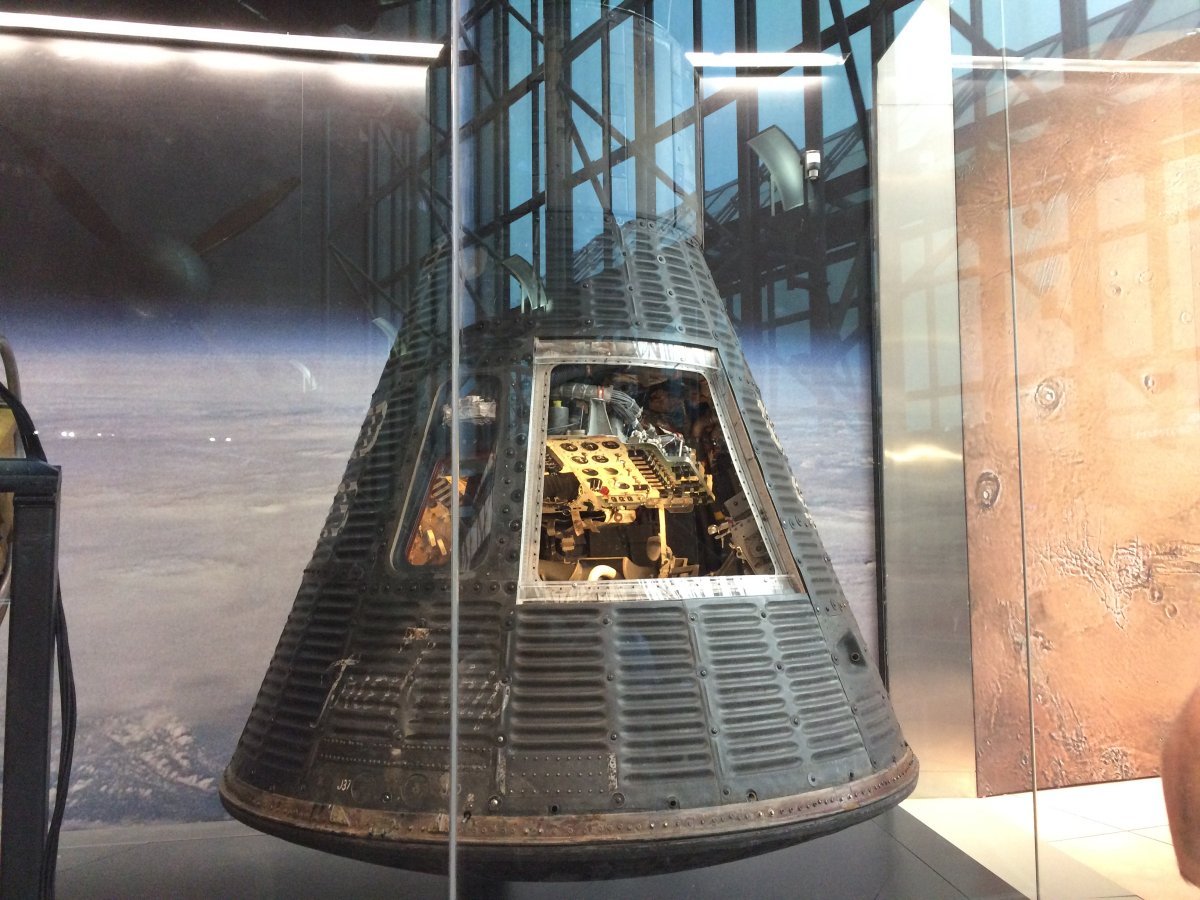 |
|
|
|
This is the Gemini IV capsule in which James McDivitt and Ed White spent four days. White "walked" in space for 21 minutes, the first American to do so. The ten Gemini flights were where NASA
learned how to fly in space, perfecting rendezvous techniques and basic activities in space. Again, the capsule is incredibly small for two men.
|
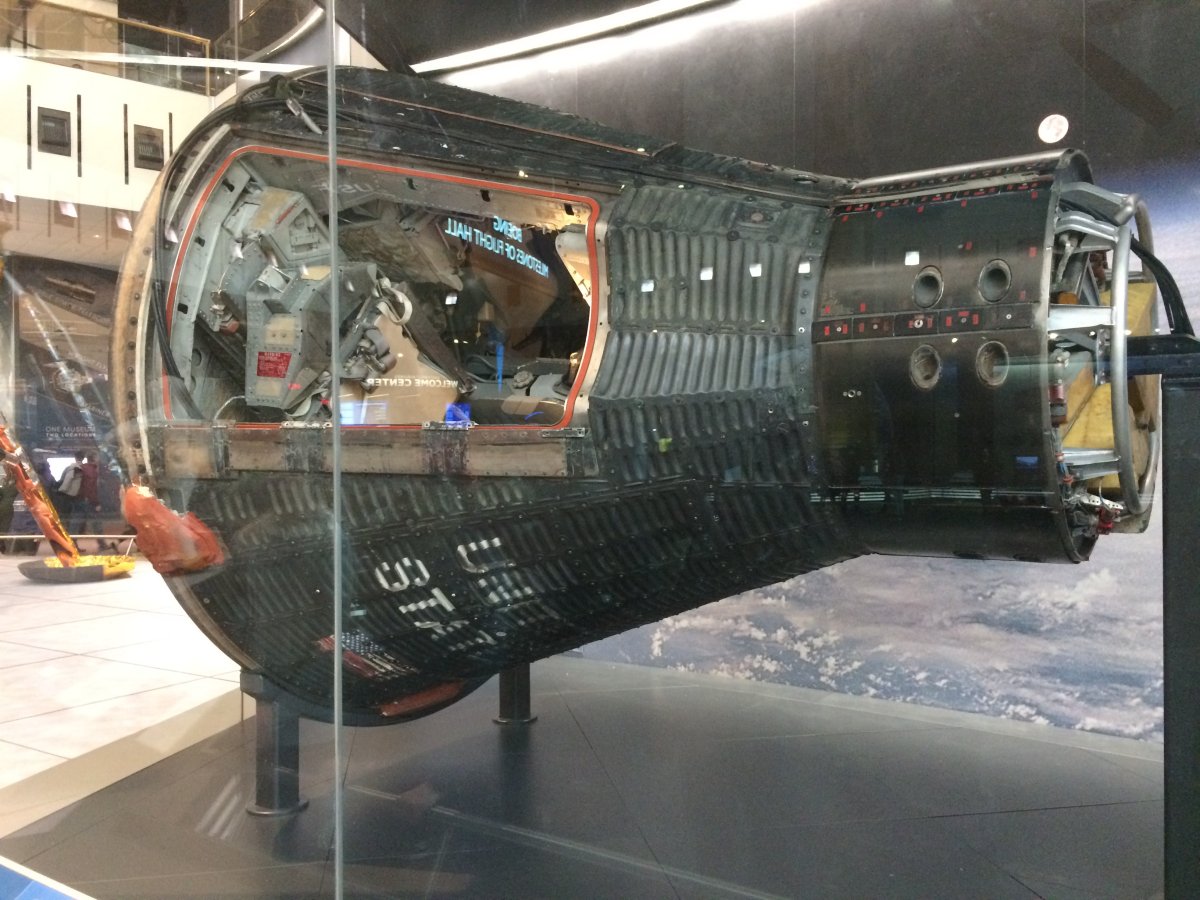 |
|
|
|
The Apollo 11 Command Module was not displayed for some reason but this Lunar Module is now center stage -- it used to be at the end of the building.
Obviously, this particular Lunar Module did not land on the moon -- the only component of the huge Saturn rocket to return to earth was the Command Module; this LM was used for testing.
But it is pretty much the real deal.
|
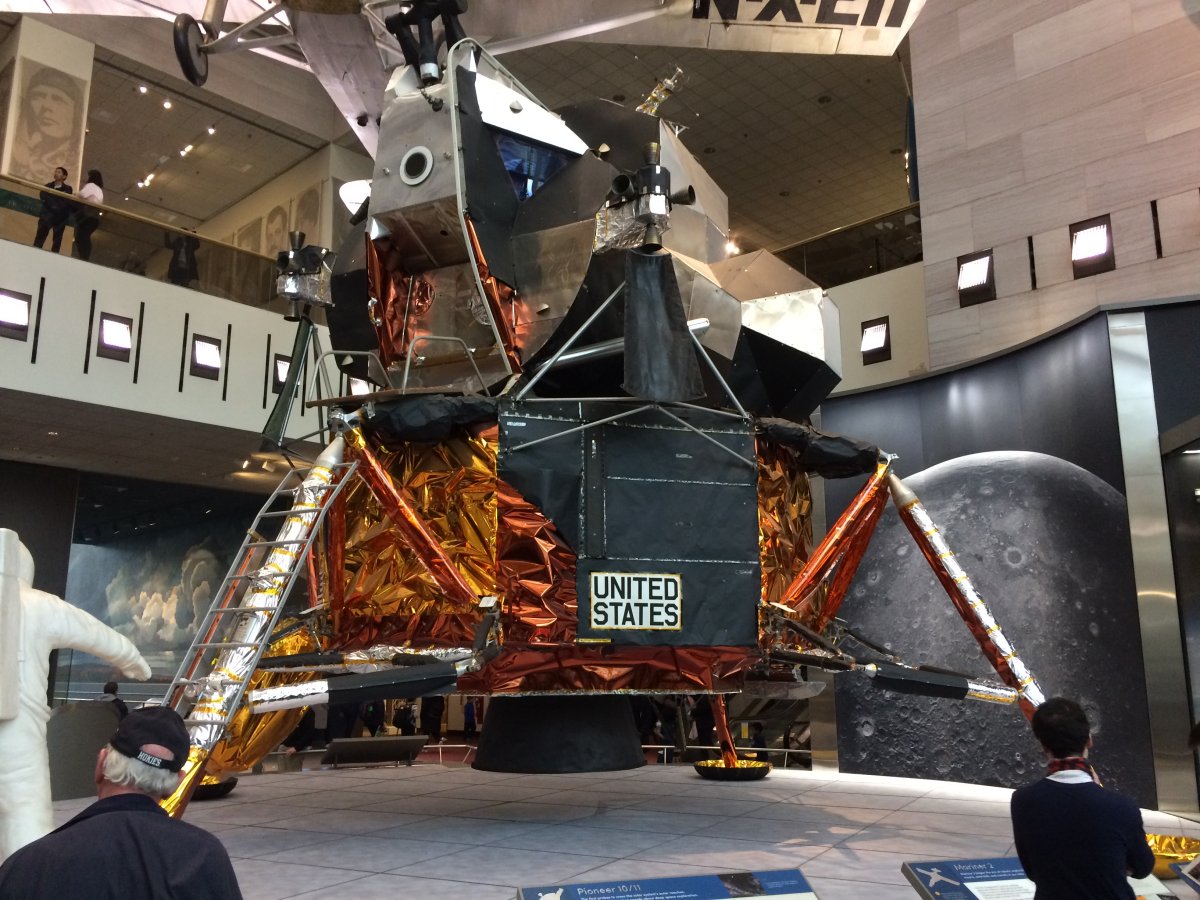 |
|
|
More recently, here is Space Ship One, which completed the first manned private spaceflight -- in 2004. The flight was suborbital, achieving an altitude of 62 miles, roughly comparable to Al Shepard's Mercury
suborbital flight in 1961 which reached an altitude of 116 miles. |
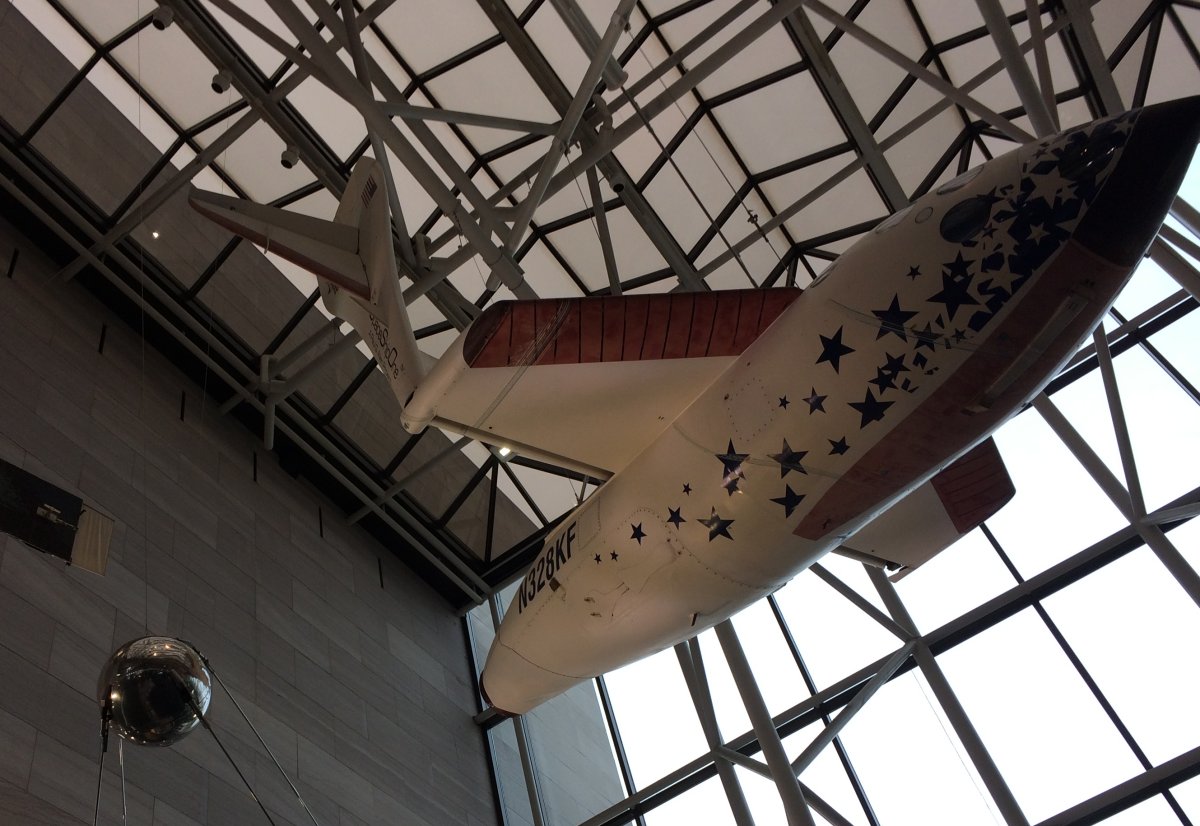 |
|
|
|
An interesting shot of Lindbergh's Spirit of St. Louis over the Lunar Module. Only 42 years separated Lindbergh's famous New York to Paris flight in 1927 and Armstrong's first steps on the moon in 1969.
|
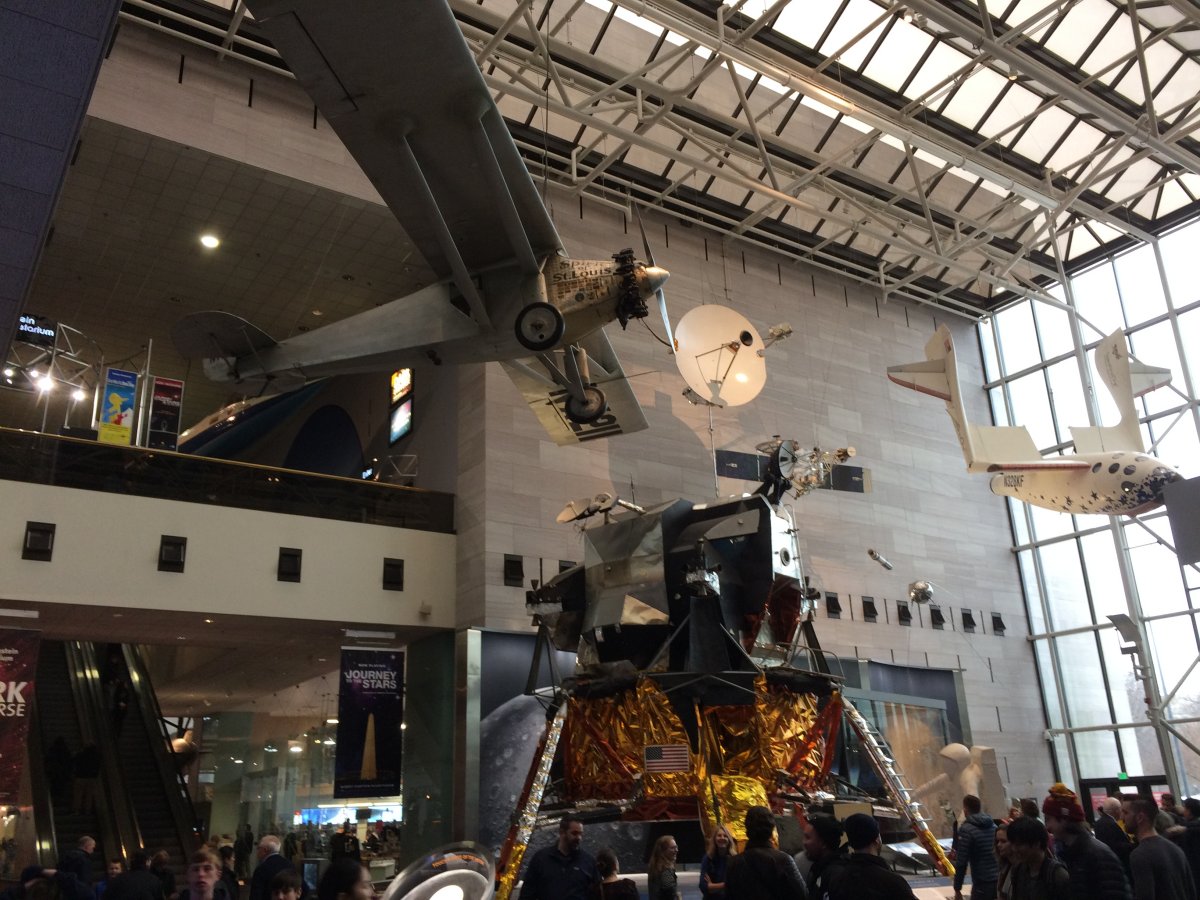 |
|
|
| Looking at the Spirit from below. |
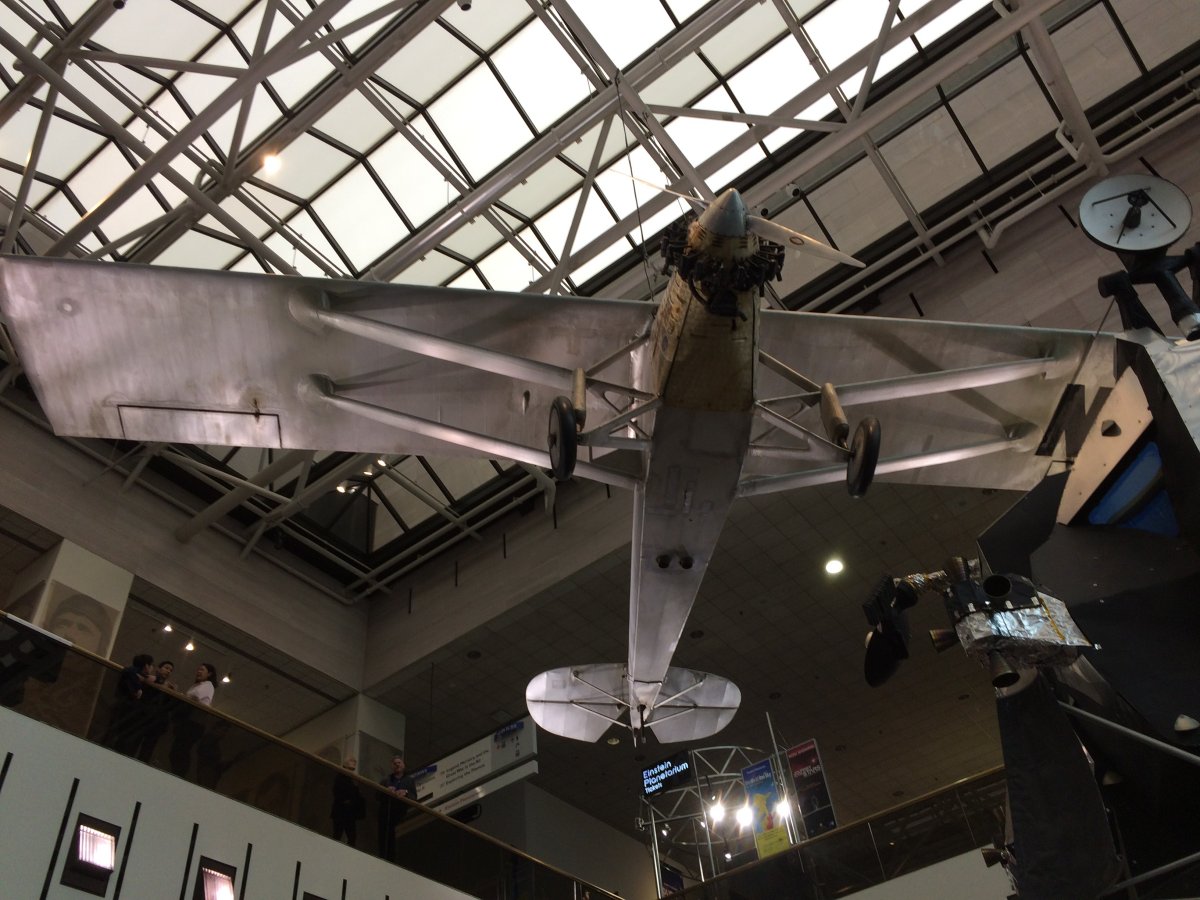 |
|
|
| The plane that started it all; the 1903 Wright Flyer! |
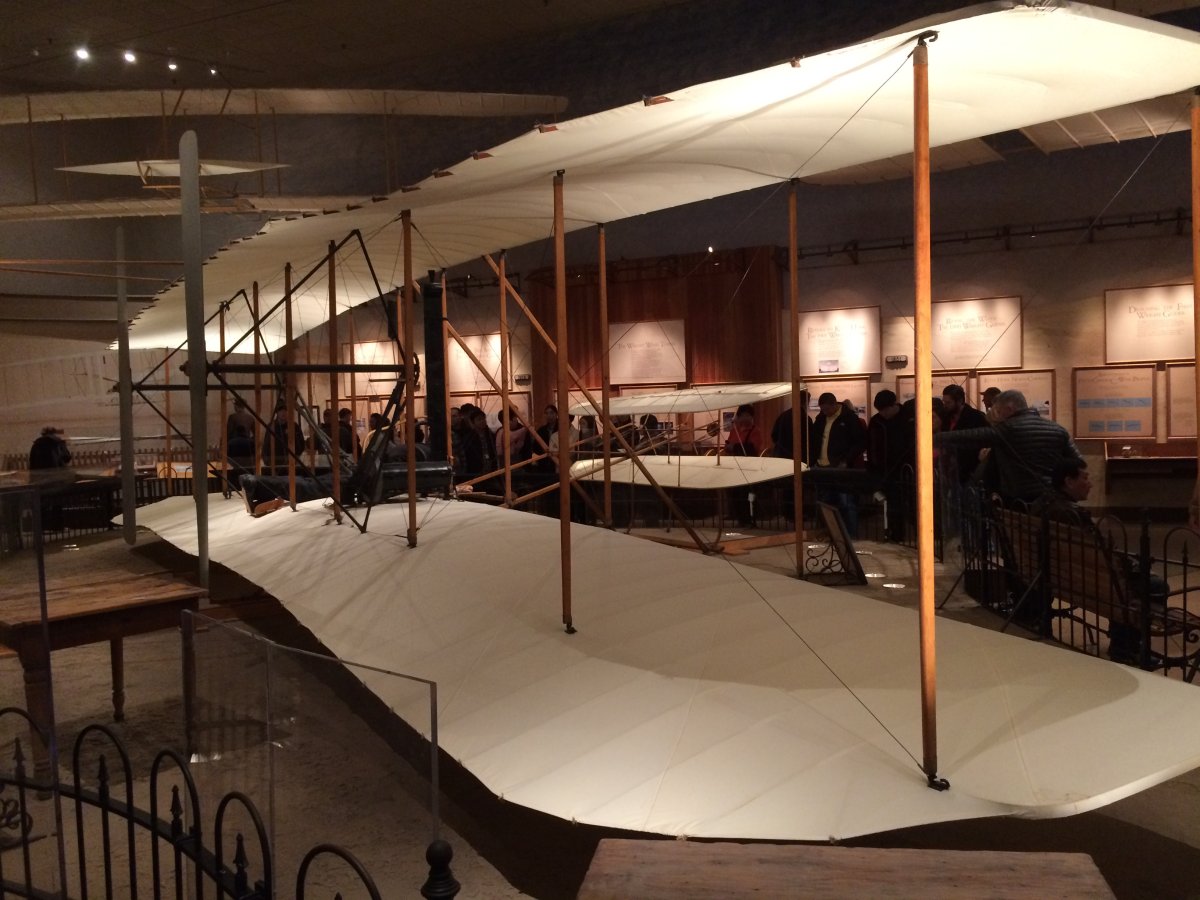 |
|
|
| |
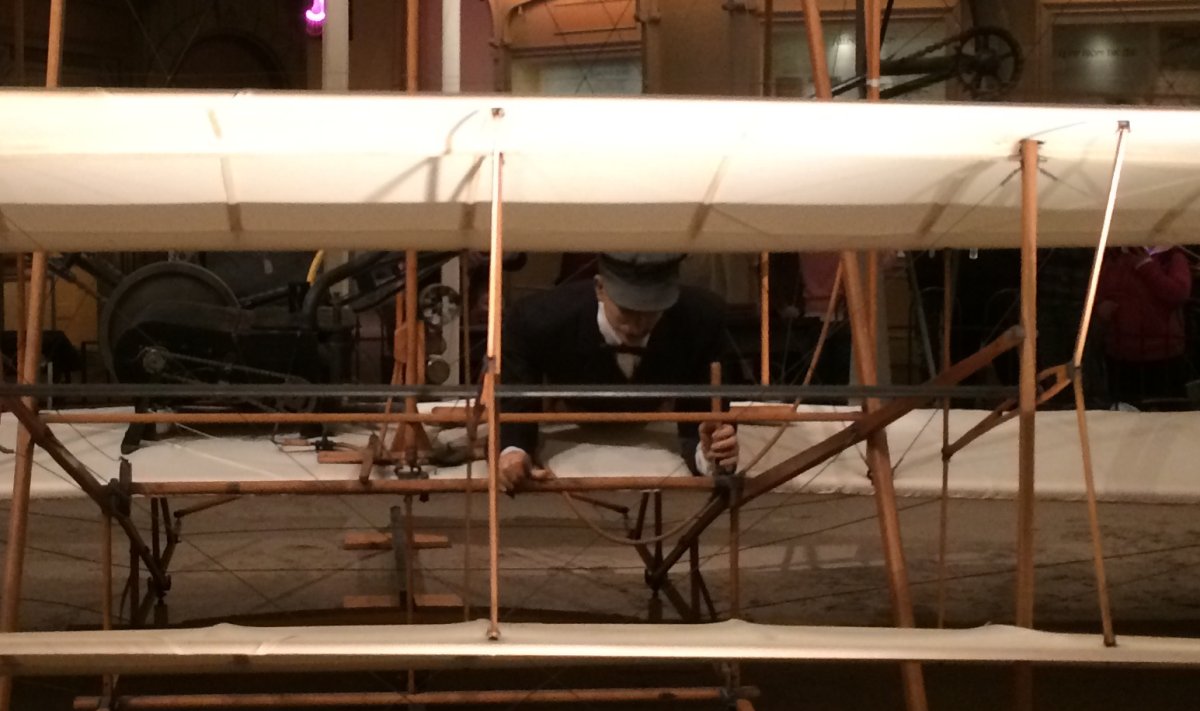 |
|
|
Don standing by one F-1 engine . There were five of them on the first stage of the Saturn V rocket. Each generated 7.5 million pounds of thrust. They burned rocket propellant one (RP-1) -- a highly
refined form of kerosine -- and liquid oxygen for 168 seconds. |
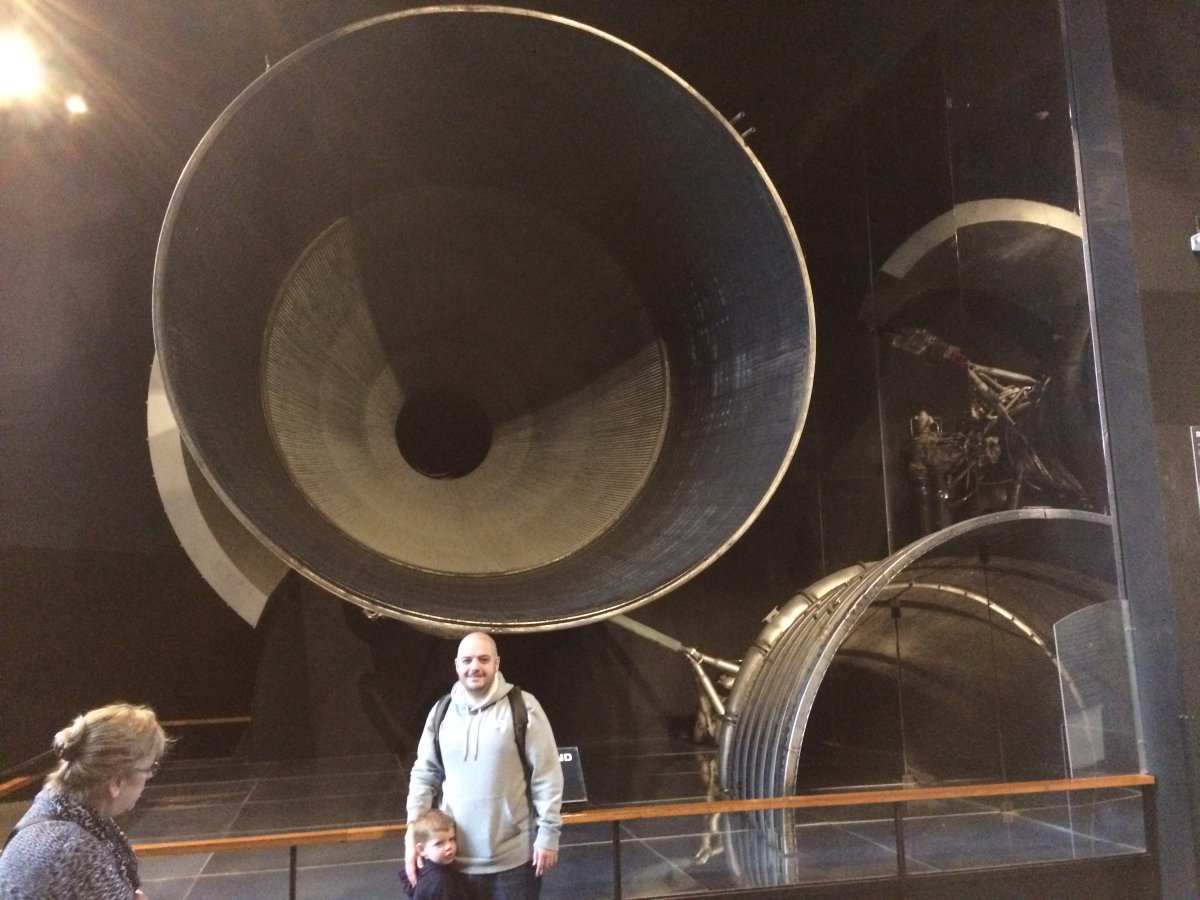 |
|
|
|
A close-up. Keep in mind this is only one of FIVE of these engines in the first stage.
|
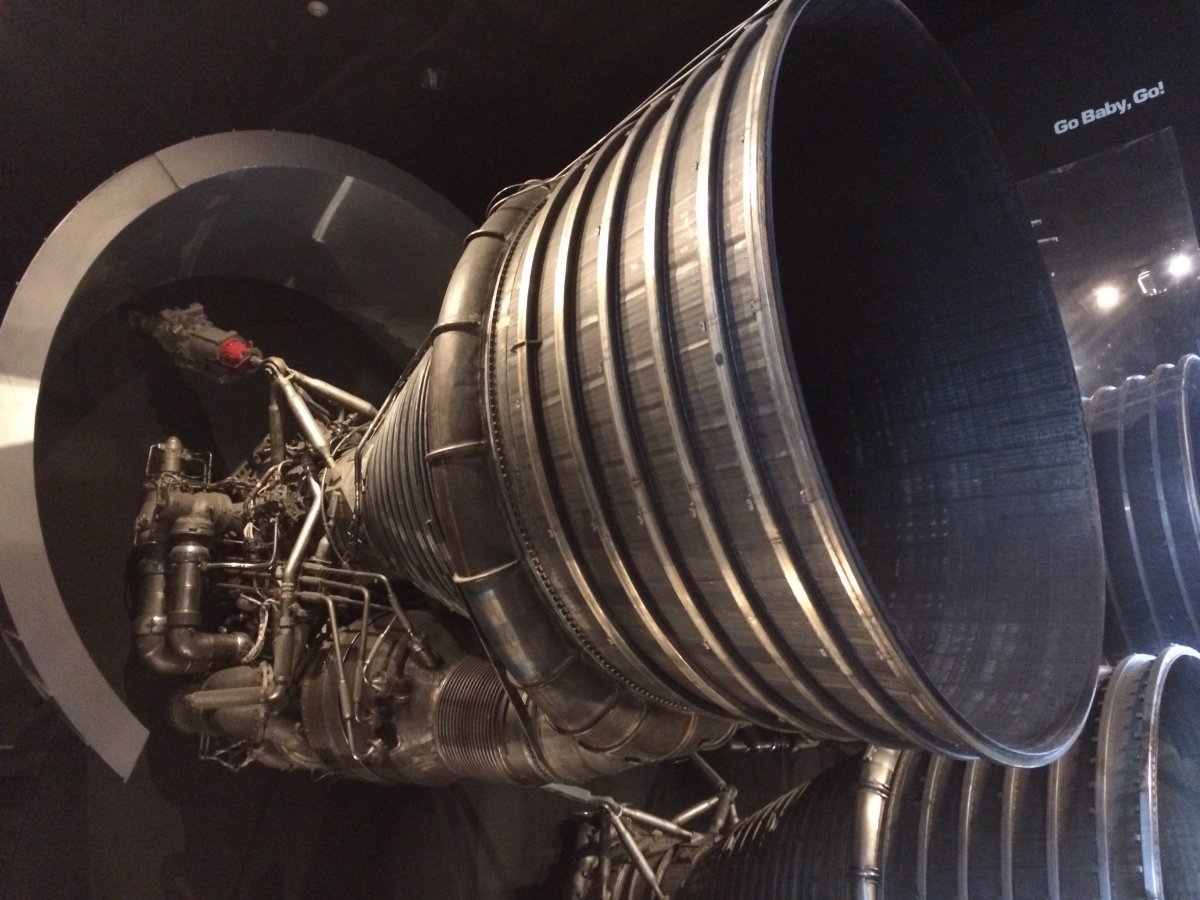 |
|
|
| The panel for the Command Module. Lots of switches! |
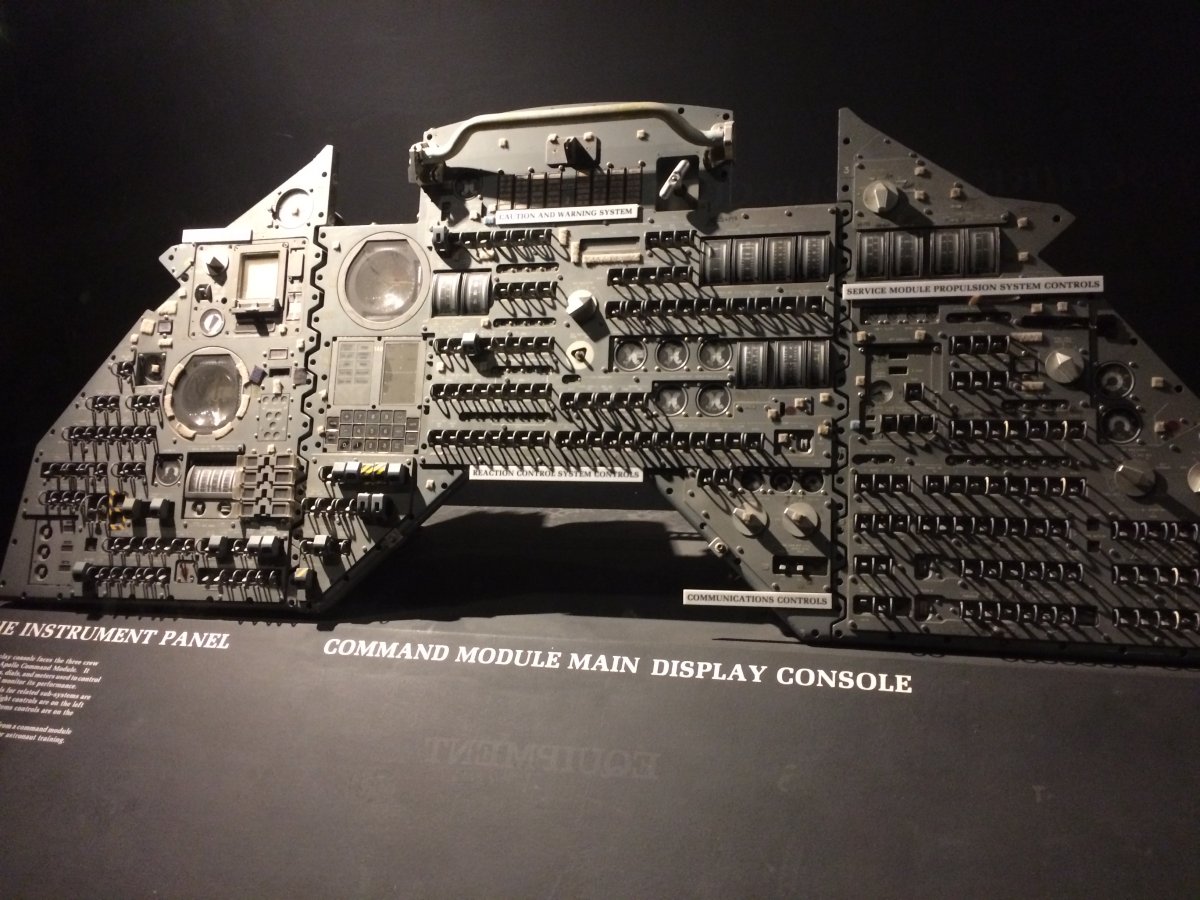 |
|
|
|
I knew they must have an Apollo Command Module here somewhere. This one was used to carry three astronauts to Skylab 4 and back to earth again.
|
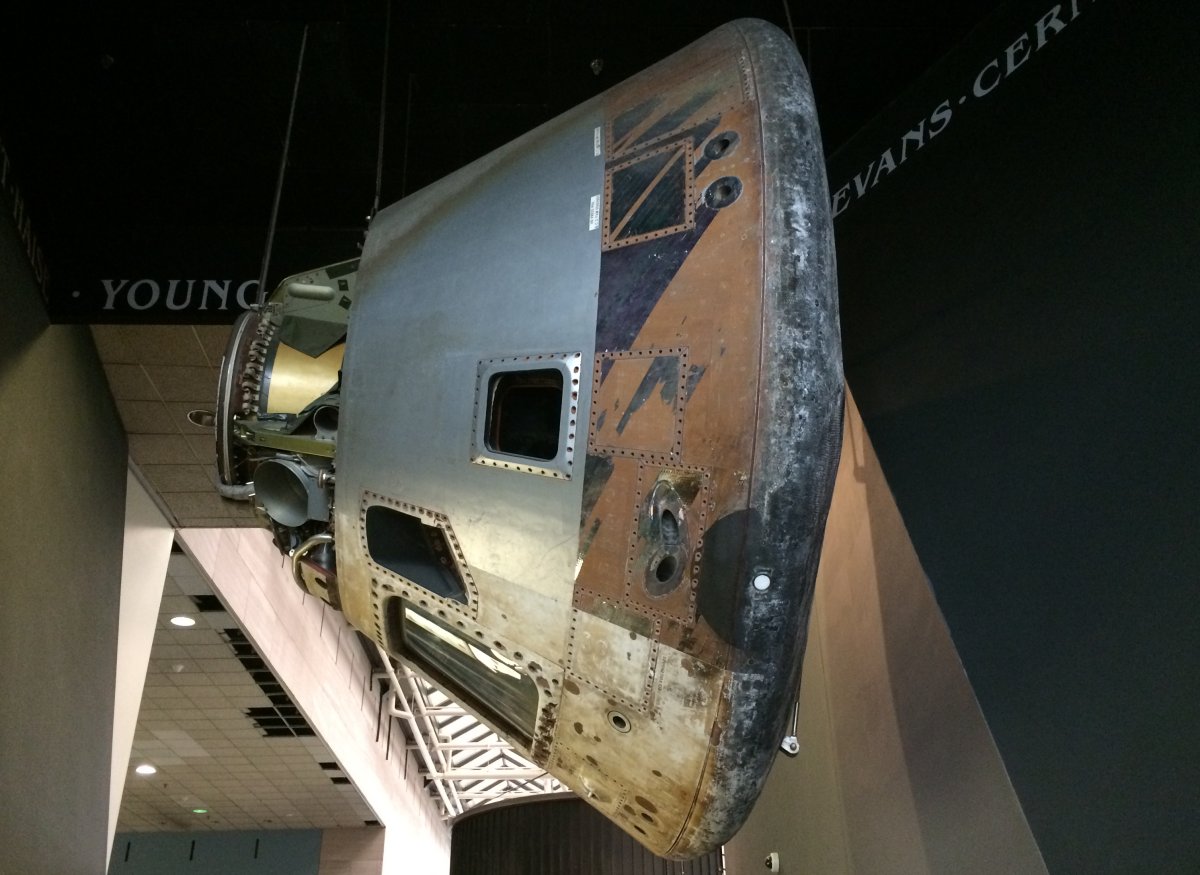 |
|
|
| A look at a Command Module along with its big Service Module. |
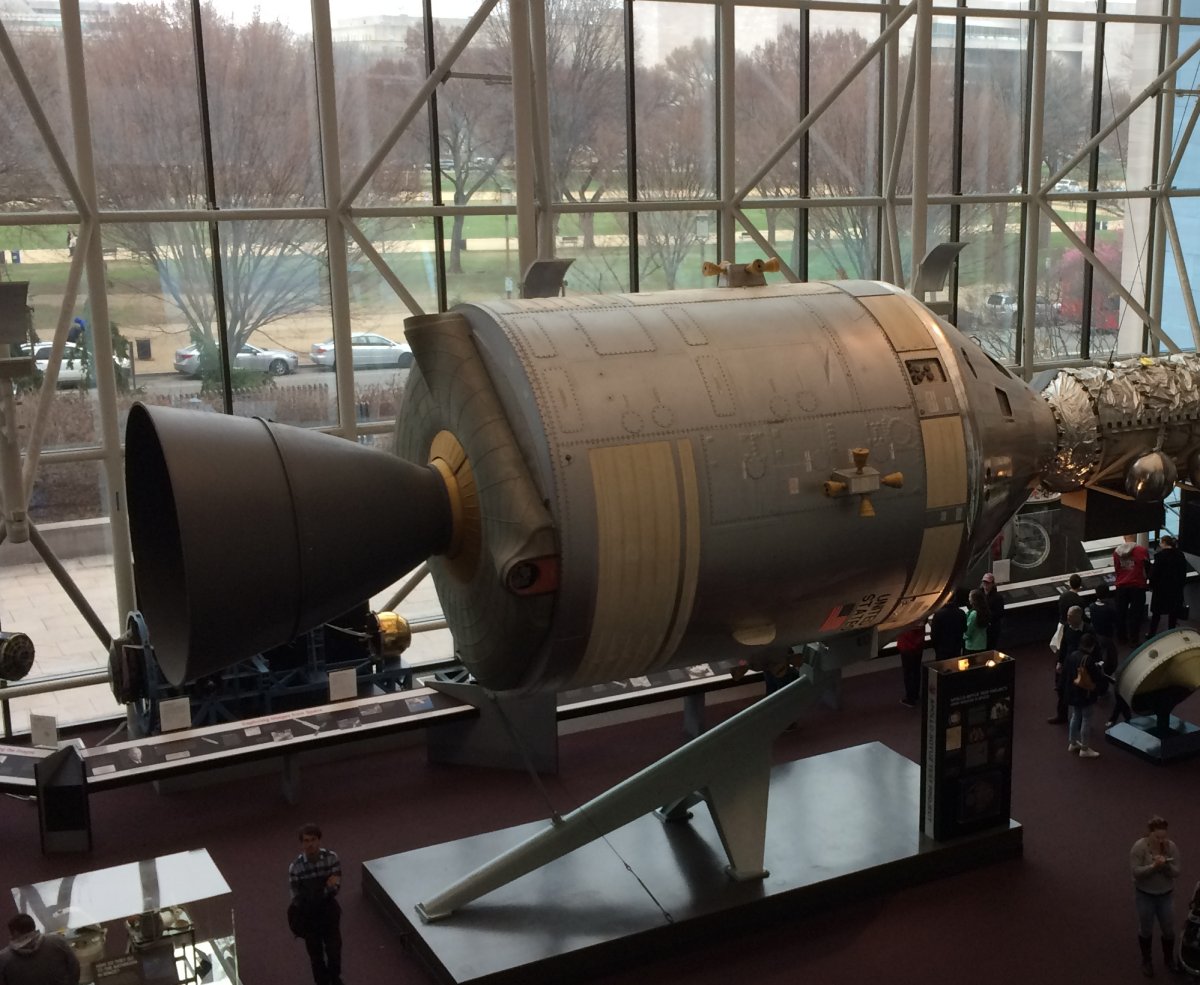 |
|
|
This is a big Lockheed Model 8 Sirius which Charles and Anne Lindbergh flew in 1931 over Canada and Alaska to Siberia, Japan and China. Anne Morrow Lindbergh wrote about their experiences in her
book North to the Orient. It was the first flight from west to east by a great circle northerly route. |
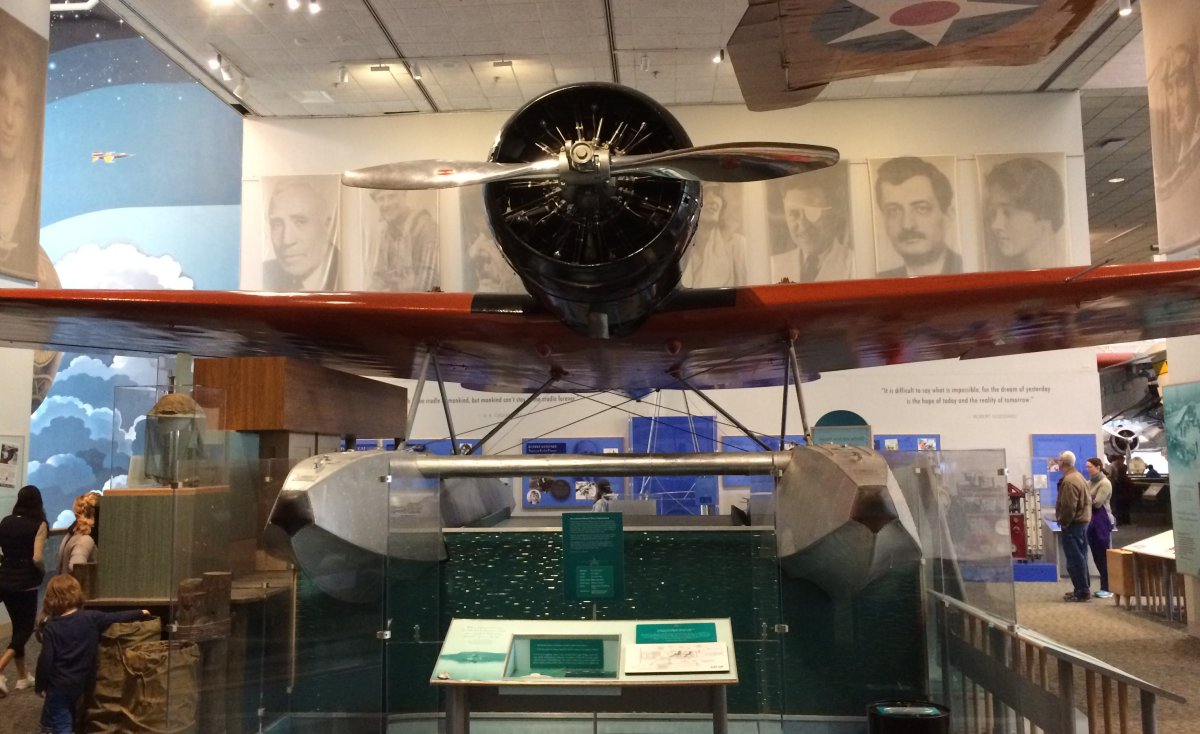 |
|
|
| |
| A 1/4 scale model of the first manned aerial vehicle! It's a balloon which carried two French noblemen on a 25 minute flight over Paris on November 21, 1783. |
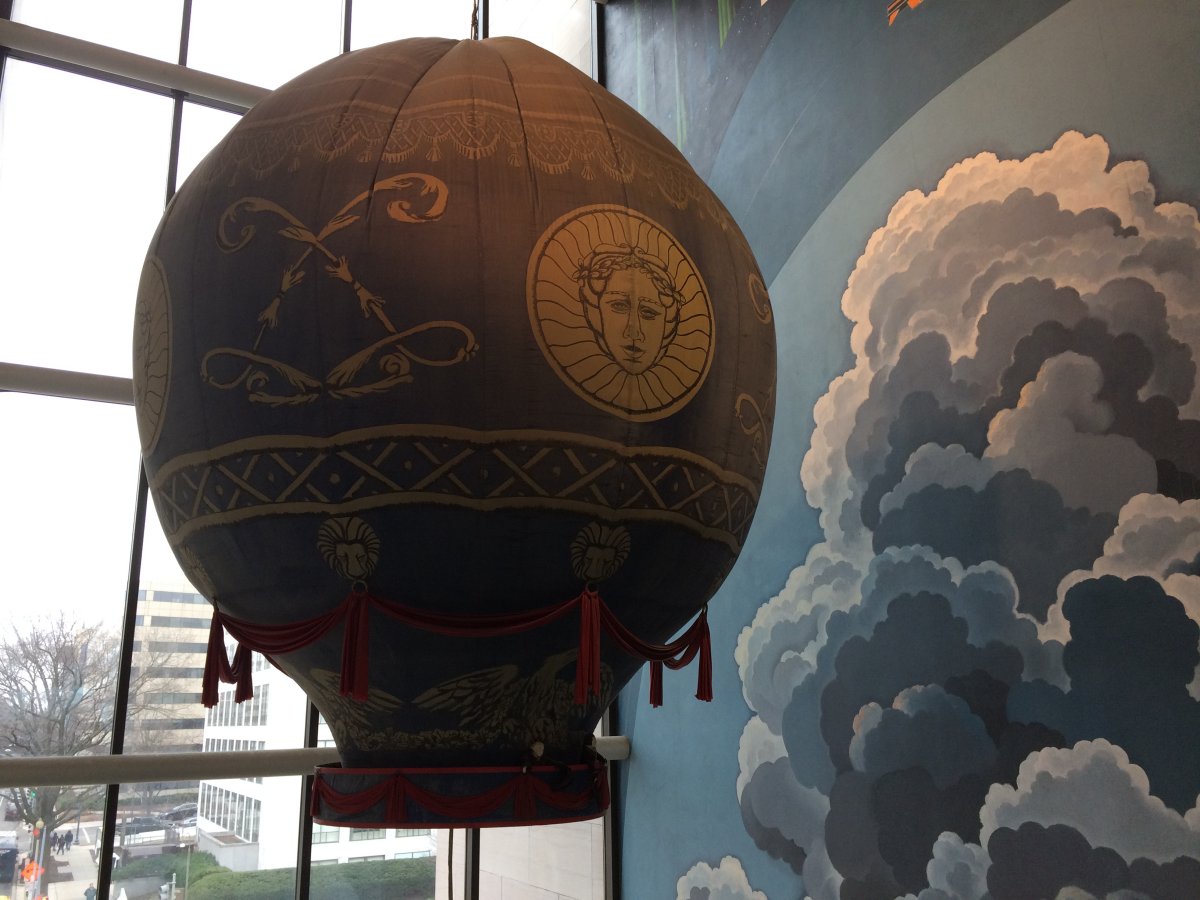 |
|
|
|
There is the Spirit of St. Louis again, looking out over the Mall.
|
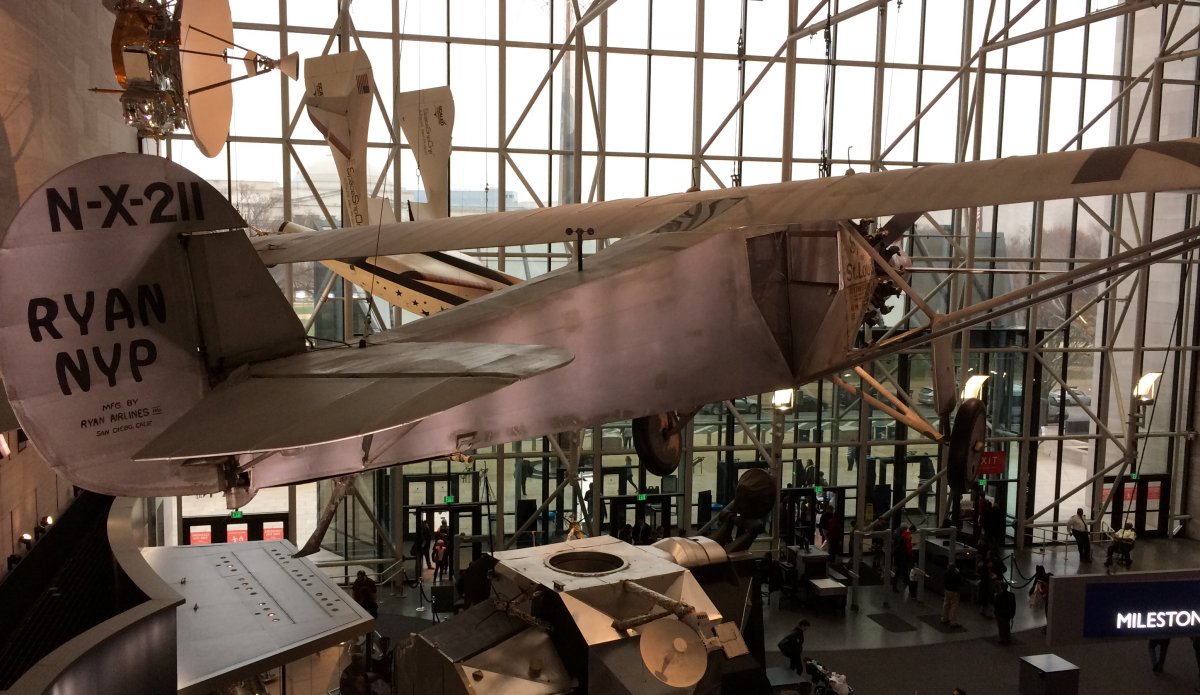 |
|
|
|
Looking down at the Lunar Module.
|
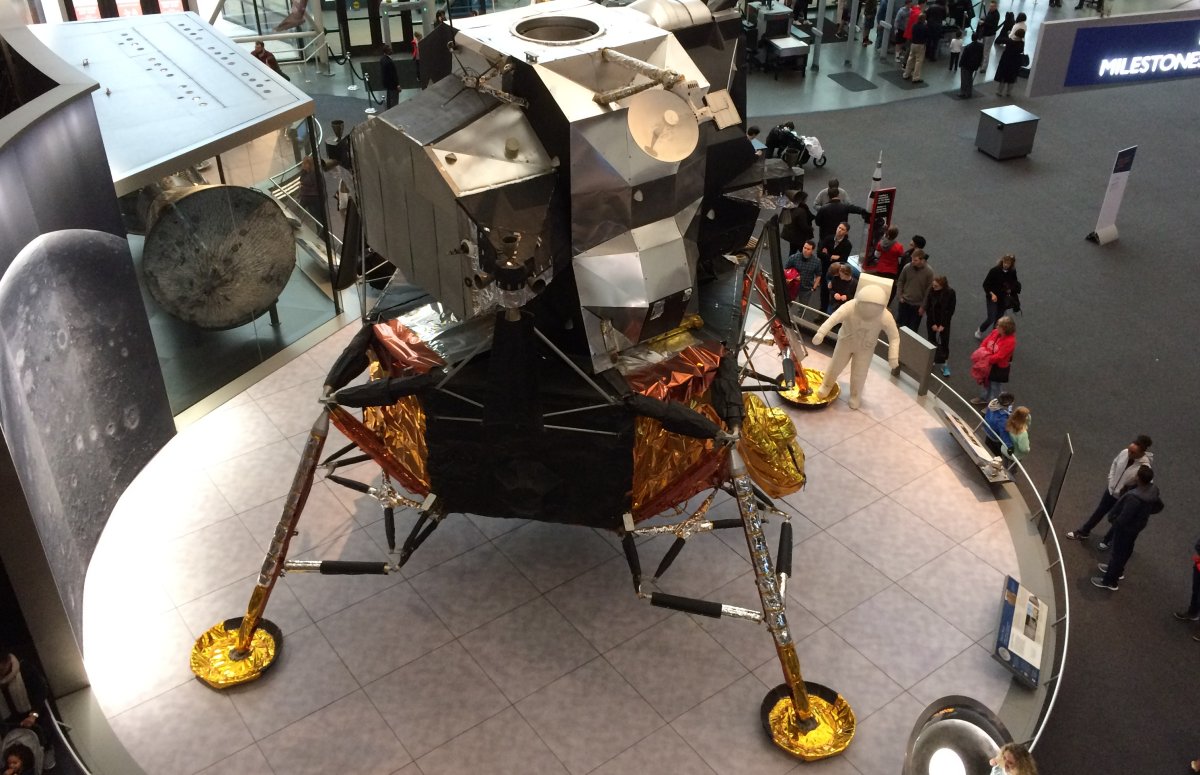 |
|
|
| I've always liked this huge painting of a B-17 bomber mission over Germany in the World War II section. It has been here since the NASM opened in 1976. |
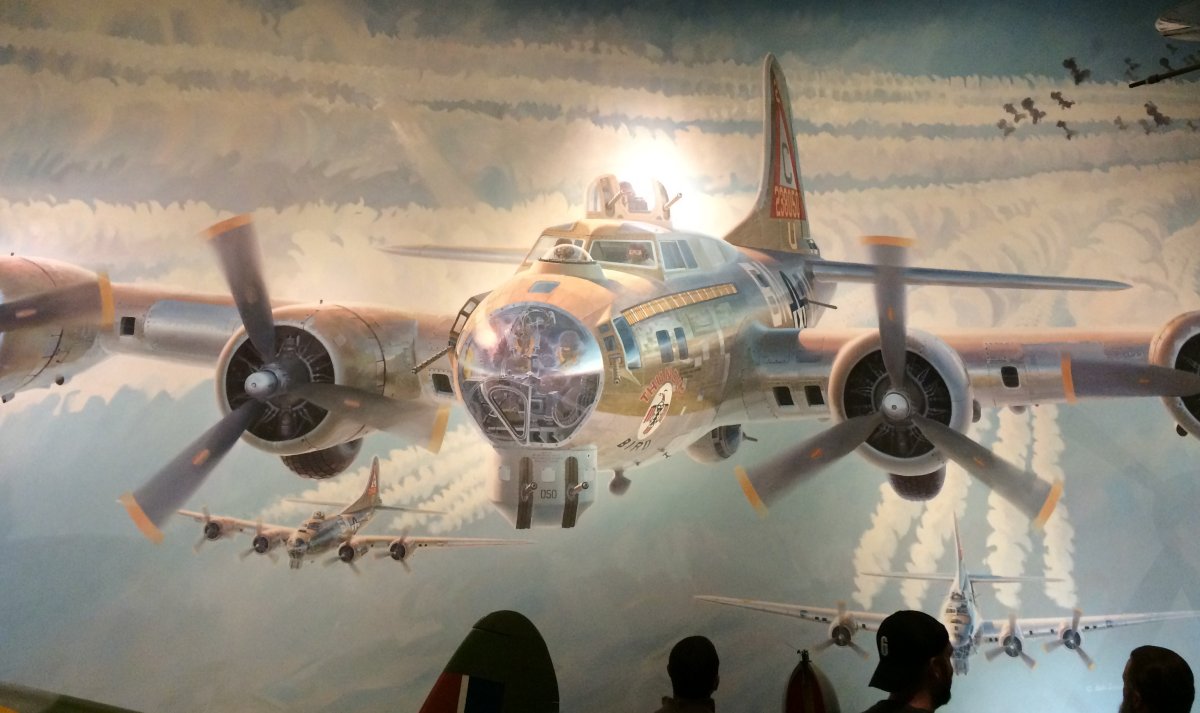 |
|
|
| I always have to show a picture of the ME-109G. |
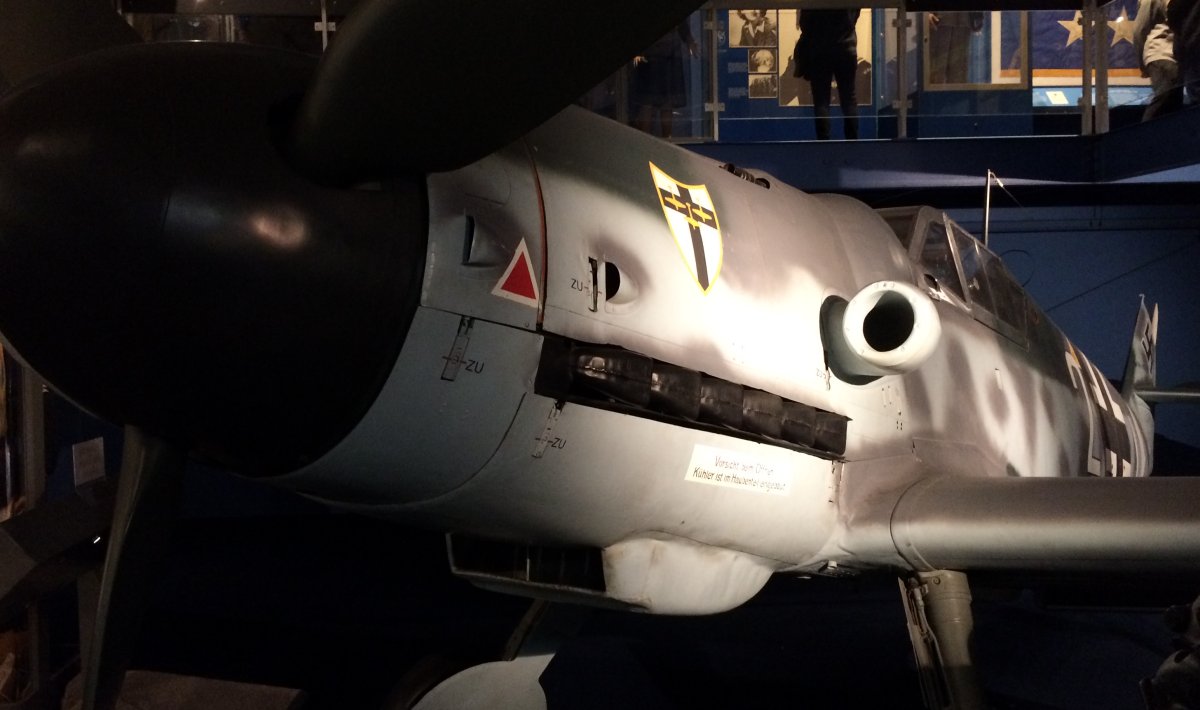 |
|
|
I've also always liked the two paintings at the entrance of the World War Two area. Both have to do with the Japanese attack on Pearl Harbor, December 7, 1941, truly one of the pivotal events in
world history. |
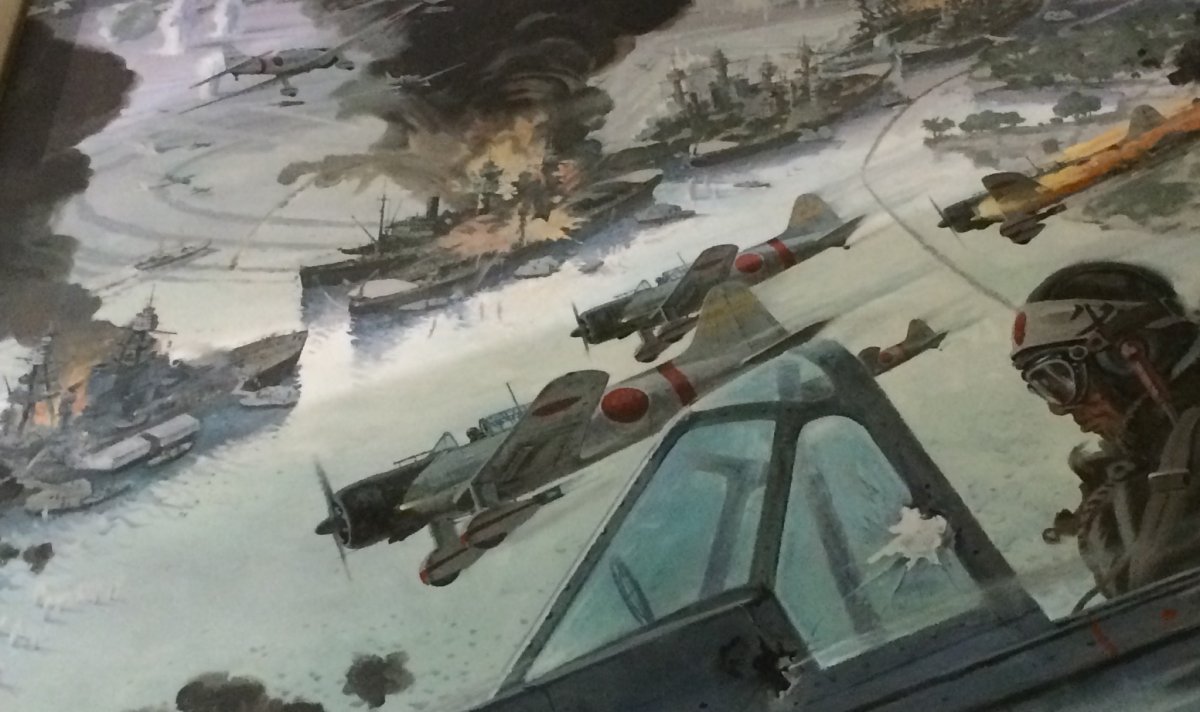 |
|
|
|
|
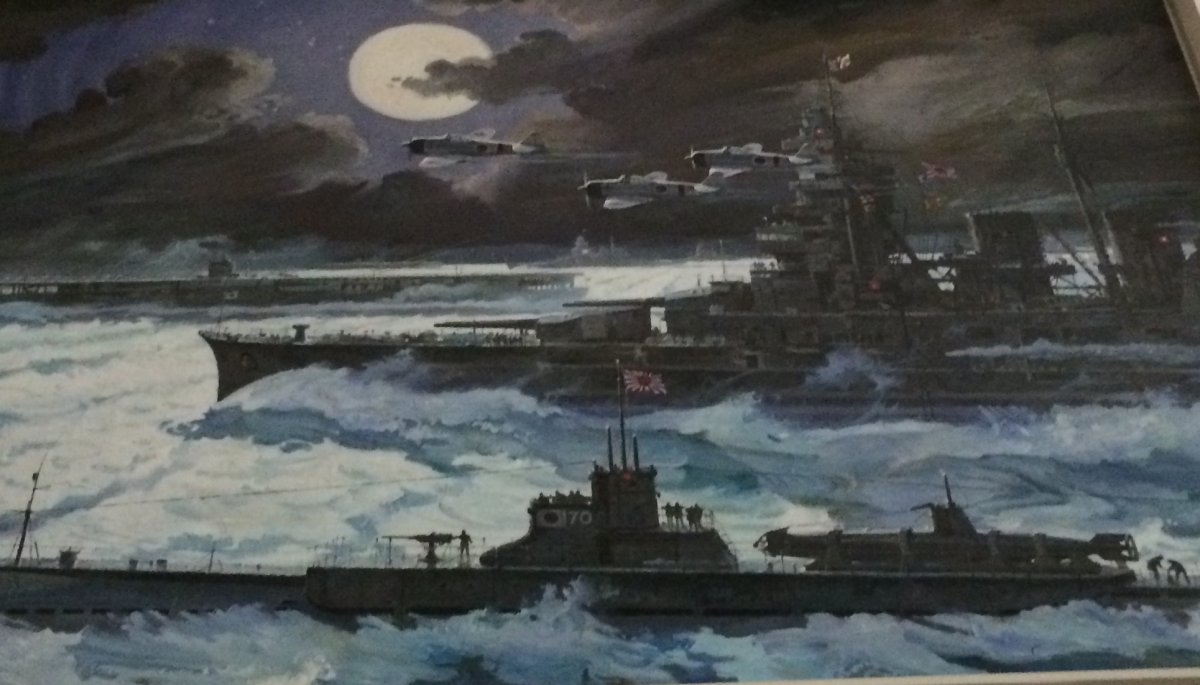 |
|
|
| Moving to the Naval Aviation section, a Dauntless dive bomber sweeps overhead. The exhibit captures well how crowded the below deck hangar of an aircraft carrier is. |
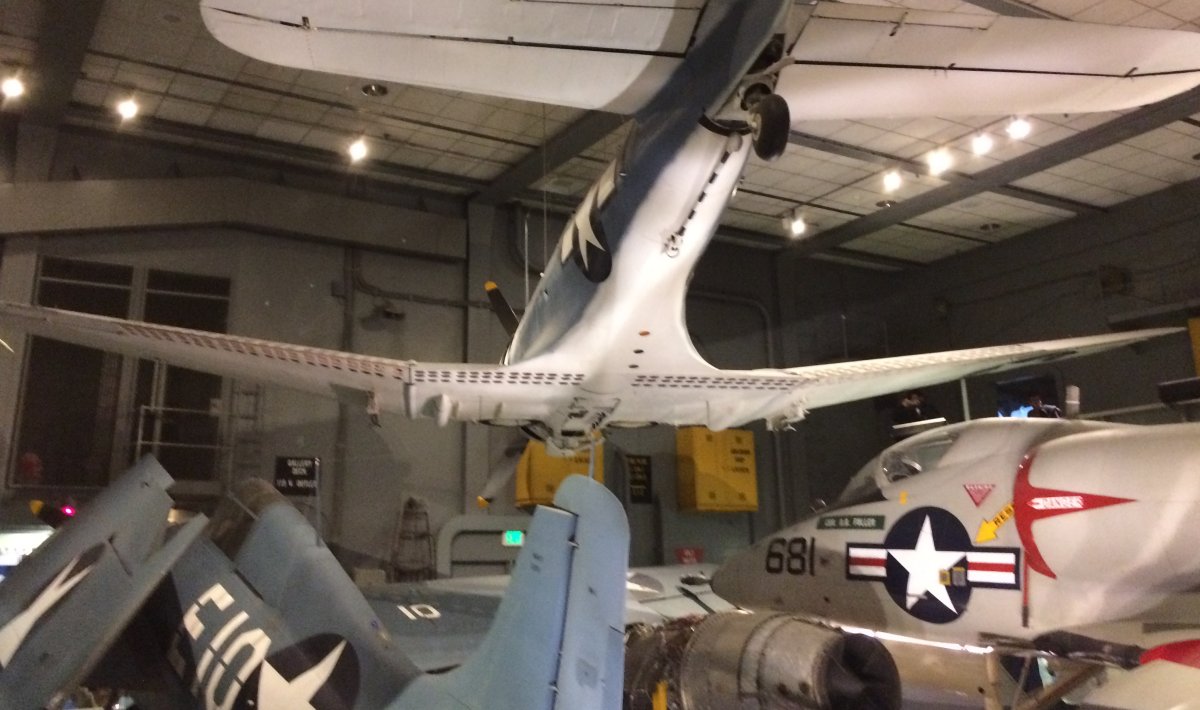 |
|
|
|
Also one of my favorite exhibits: a model of the U.S.S. Enterprise (CVN-65). The Big-E server 51 years, and was retired in 2012. The next Ford-class carrier, CVN-80, will be named Enterprise.
It took Stephen Henninger 12,000 hours over 12 years to built the ship. It took another 4,000 to build the air wing of 83 aircraft. Wow. By comparison, it took me 3,000 hours over five years to build
my RV-7.
|
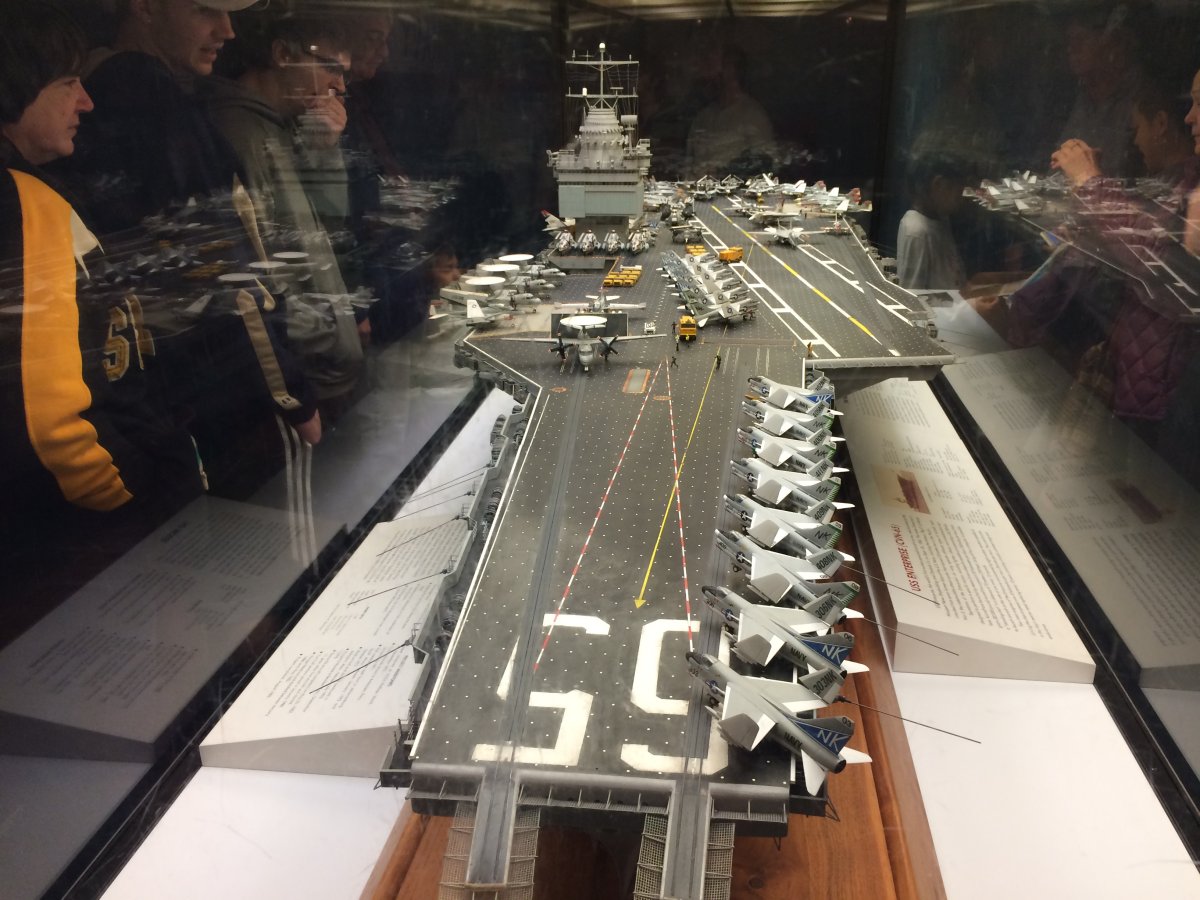 |
|
|
|
On 23 August 1977, the Gossamer Condor 2 flew the first figure-eight, a distance of 2,172 metres winning the first Kremer prize. It was built by Dr Paul B. MacCready and piloted by amateur cyclist
and hang-glider pilot Bryan Allen. Although slow, cruising at only 11 mph (18 km/h), it achieved that speed with only 0.35 hp.
The Kremer prize had been set up in 1959 by Henry Kremer, a British industrialist, and offered £50,000 in prize money to the first group that could fly a human-powered aircraft over a figure-eight course covering a total of one mile (1.6 kilometers). The course also included a ten-foot pole that the aircraft had to fly over at the start and at the end.
|
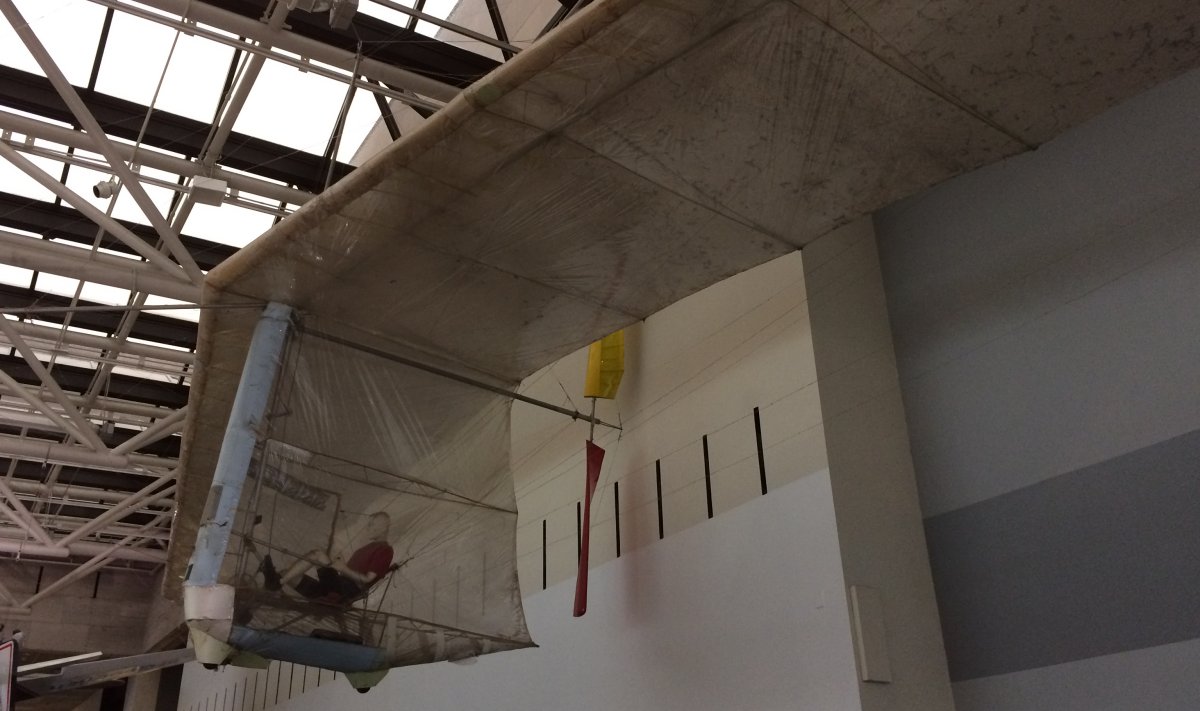 |
|
|
The Goddard May 1926 Rocket. Goddard launched the world's first liquid fueled rocket on March 16, 1926. This May rocket used parts salvaged from the March rocket.
The rocket used gasolene and liquid oxygen. |
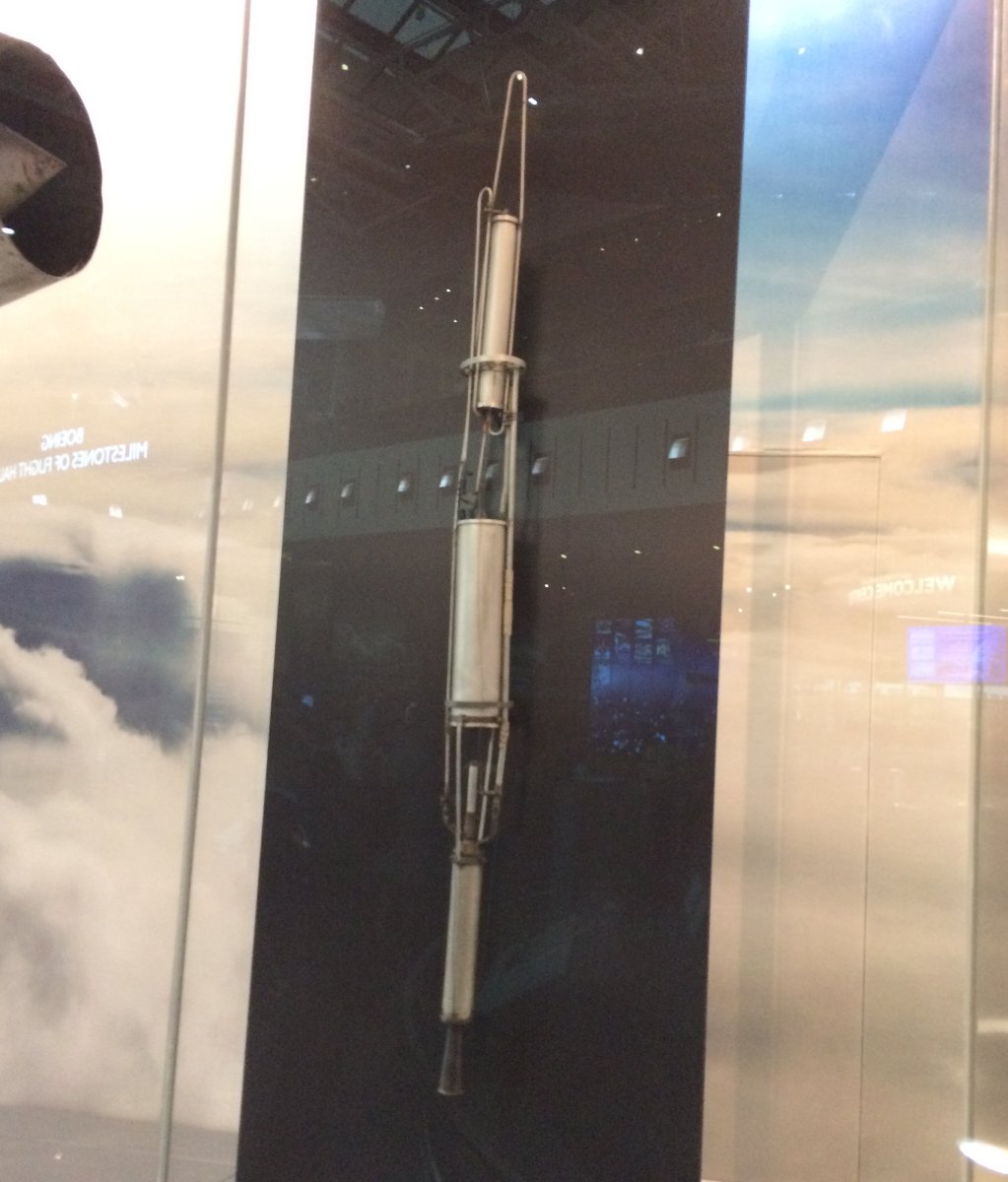 |
|
|
| |
| |
| |
|
|
|
|
|
|

























